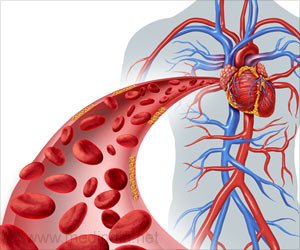New Guidelines for Cholesterol-lowering Treatment Increase Treatment Cost

For patients with a very high risk of cardiovascular disease, such as those with a recent heart attack, the new guidelines recommend both lowering the LDL-C level by at least 50 percent and having a LDL-C level of less than 1.4 millimoles per liter of blood (mmol/L). This is a sharp reduction compared to previous guidelines presented three years earlier. To reach these targets, the organizations recommend combining lifestyle modifications with the low-cost cholesterol-lowering drugs statins and ezetimibe. If the LDL-C goal isn’t reached despite the use of these therapies, adding a new type of high-cost cholesterol-lowering drug known as a PCSK9 inhibitor is recommended.
In this study, the researchers predicted the implications of the new guidelines by calculating how many patients would be eligible for expanded therapy. Using Sweden’s national registry for heart disease patients, SWEDEHEART, the researchers studied more than 25,000 people who suffered heart attacks between 2013 to 2017 and whose cholesterol levels were measured during follow-up visits after six to 10 weeks.
Advertisement
The researchers found that more than 50 percent of the patients would be eligible for PCSK9 inhibitors as they would not have reached the LDL-C targets with only high-intensity statins and ezetimibe. When use of two currently approved PCSK9 inhibitor drugs (alirocumab or evolocumab) was simulated in those patients, around 90 percent of all patients attained the LDL-C target. The annual cost of treating a patient in Sweden with PCSK9 inhibitors is more than 4,500 euros compared to only around 30 euros with statins or ezetimibe.
“PCSK9 inhibitors are clearly effective cholesterol-lowering drugs which may reduce the risk of cardiovascular events but they come at a substantial cost,” says Ali Allahyari, resident physician in cardiology and doctoral student at the Department of Clinical Sciences, Danderyd Hospital, Karolinska Institutet, and first author of the study. “If half of the patients with heart attacks would be eligible for this drug, the financial burden on health systems throughout Europe and other countries using the ESC/EAS guidelines may be substantial unless the cost of treatment is reduced.”
Using previous analyses, the researchers looked at to what degree lowering one’s bad cholesterol can help reduce the risk of having another severe cardiovascular episode. They estimated that using the PCSK9 inhibitor drug alirocumab to prevent one major adverse cardiovascular event, such as another heart attack, would cost around 846,000 euros in Sweden (8.9 million Swedish kronor).
“Many new therapies are being tested and introduced in cardiovascular medicine today,” says Peter Ueda, intern physician and postdoctoral researcher at the Department of Medicine in Solna who led the study. “Our analyses highlight yet another situation for which we need to consider what we deem reasonable in terms of the number of patients being treated, the expected health gains and cost.”
Source: Eurekalert
Source link
#Guidelines #Cholesterollowering #Treatment #Increase #Treatment #Cost



